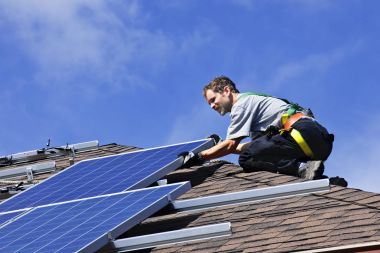Solar Panel Cost Per Square Foot | How Much Do Solar Panels Cost New Jersey
I. Introduction
Solar panels have become an increasingly popular option for homeowners looking to reduce their carbon footprint and save on energy costs. As the demand for solar power continues to rise, it’s important for individuals to understand the factors that contribute to the cost of solar panels, particularly in terms of square footage. In this article, we will explore the various aspects that affect the cost per square foot of solar panels and provide valuable insights for those considering this renewable energy source.
II. Factors Affecting Solar Panel Costs
Quality and Efficiency:
The cost per square foot of solar panels can vary based on the quality and efficiency of the panels themselves. Higher-quality panels with better efficiency ratings tend to be more expensive, but they also provide greater long-term benefits in terms of energy production and durability.
Installation Complexity:
The complexity of the installation process can influence the cost per square foot of solar panels. Factors such as the roof type, accessibility, and the need for additional equipment or structural modifications can increase installation expenses.
Location and Climate:
The geographical location and climate conditions play a crucial role in determining solar panel costs. Areas with abundant sunlight and favorable weather conditions may have lower installation costs, while regions with challenging terrain or extreme weather patterns might require additional investments.
Government Incentives and Rebates:
Government incentives and rebates can significantly impact the overall cost of solar panels. Understanding the available incentives and taking advantage of them can help reduce the cost per square foot, making solar panel installations more affordable.
III. Cost Analysis and Comparison
Price Range:
It’s essential to explore the price range of solar panels per square foot to make an informed decision. Researching different suppliers, brands, and installation companies can provide a better understanding of the cost variations and help identify the most cost-effective options.

Return on Investment (ROI):
Calculating the return on investment is crucial when considering solar panel installations. By factoring in the initial cost, energy savings, and potential incentives, individuals can determine the ROI and make a well-informed financial decision.
Long-Term Benefits:
Solar panels not only contribute to a greener environment but also offer long-term financial benefits. Reduced energy bills, potential tax incentives, and increased property value are all advantages that should be considered when evaluating the cost per square foot.
IV. Conclusion
In conclusion, understanding the factors influencing the cost per square foot of solar panels is essential for anyone interested in adopting this renewable energy source. By considering factors such as quality, installation complexity, location, and government incentives, individuals can make informed decisions and maximize the financial benefits of solar panel installations. Investing in solar panels not only contributes to a sustainable future but also offers a rewarding long-term investment.
FAQs
Why install solar panels?
Installing solar panels is a great way to reduce your carbon footprint, save money in the long run, and help out the environment. Solar energy is also much more cost-effective than fossil fuels.
How much do commercial solar panels cost?
The average commercial system price ranged from as low as $2.87/Watt to over $3.22/Watt before tax incentives and rebates.
How much do solar panels cost?
The solar panel price range can vary greatly depending on the location, with fares of $17,538 – $23,458 after taking into account the federal solar tax credit, with an average solar installation costing about $20,498. On a cost per watt ($/W) basis, solar panel prices in 2022 average $2.77/W
